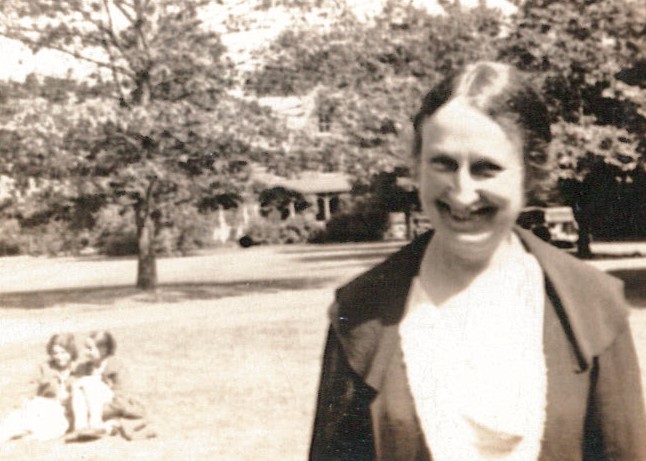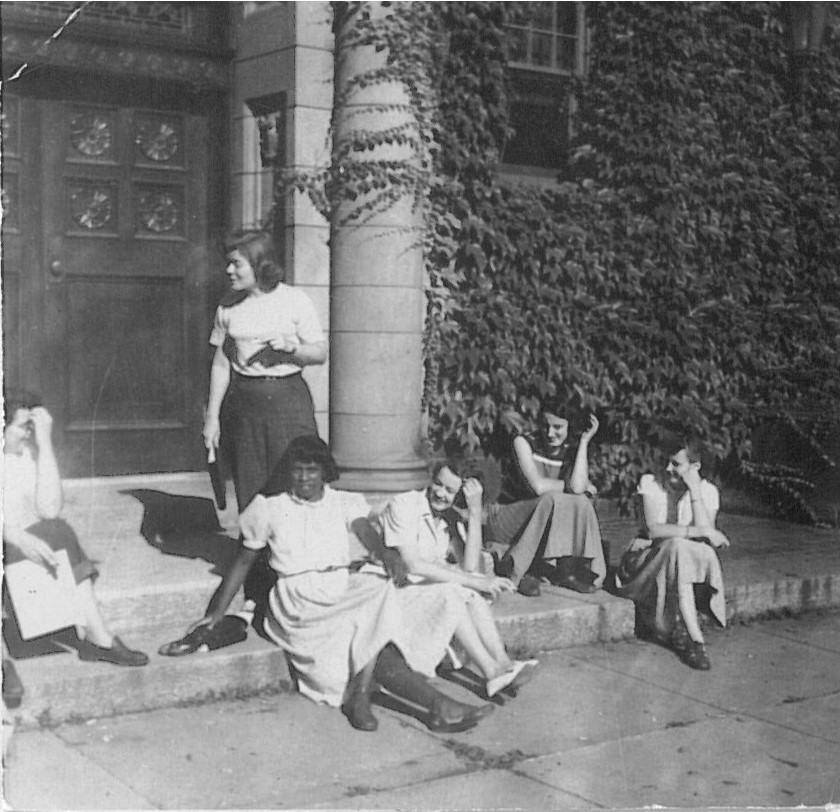[et_pb_section bb_built=”1″ admin_label=”section” background_image=”https://sites.smith.edu/ssw100-history/wp-content/uploads/sites/256/2018/05/1950-Naomi-Schott-Reggie-Armundson-60-1315.jpg” background_color=”rgba(0,62,81,0.55)” parallax_method=”off” next_background_color=”#ffffff” custom_padding_tablet=”50px|0|50px|0″ custom_padding_last_edited=”on|desktop” _builder_version=”3.2.2″ background_blend=”overlay” module_class=”blue”][et_pb_row admin_label=”row” background_position=”top_left” background_repeat=”repeat” background_size=”initial”][et_pb_column type=”1_3″][/et_pb_column][et_pb_column type=”2_3″][et_pb_divider color=”#ffffff” show_divider=”off” height=”200″ divider_style=”solid” divider_position=”top” hide_on_mobile=”on” disabled_on=”on|on|off” _builder_version=”3.2.2″ /][et_pb_post_title _builder_version=”3.2.2″ meta=”off” featured_image=”off” text_color=”light” title_font_size=”50px” title_line_height=”1.2em” /][/et_pb_column][/et_pb_row][/et_pb_section][et_pb_section bb_built=”1″ specialty=”off” parallax_method=”off” prev_background_color=”rgba(0,62,81,0.55)” custom_padding_tablet=”50px|0|50px|0″ custom_padding_last_edited=”on|desktop” _builder_version=”3.2.2″][et_pb_row admin_label=”row” make_fullwidth=”off” use_custom_width=”off” width_unit=”on” use_custom_gutter=”off” custom_padding=”0px|||” padding_mobile=”on” allow_player_pause=”off” parallax=”off” parallax_method=”off” make_equal=”off” parallax_1=”off” parallax_method_1=”off” parallax_2=”off” parallax_method_2=”off” column_padding_mobile=”on” background_position=”top_left” background_repeat=”repeat” background_size=”initial”][et_pb_column type=”1_3″][et_pb_post_title admin_label=”Categories” _builder_version=”3.2.2″ title=”off” author=”off” date=”off” comments=”off” featured_image=”off” meta_text_color=”#6fbee5″ /][et_pb_code admin_label=”Tags” _builder_version=”3.2.2″][tags][/et_pb_code][/et_pb_column][et_pb_column type=”2_3″][et_pb_text max_width=”620px” text_font_size=”20″ text_text_color=”#363636″ use_border_color=”off” custom_margin=”10px||0px|” text_line_height=”1.4em” text_font_size_last_edited=”on|desktop” background_position=”top_left” background_repeat=”repeat” background_size=”initial” _builder_version=”3.2.2″]
As Associate Director, Bertha Capen Reynolds wrote a formal letter to Everett Kimball, Director, laying out her reasons for why she believed black students should be accepted to the SSW. Black students were not formally banned from the school, but Kimball felt it would be too difficult to find a placement for them.
[/et_pb_text][et_pb_text max_width=”620px” text_font_size=”20″ text_text_color=”#363636″ use_border_color=”off” custom_margin=”30px||0px|” text_line_height=”1.5em” text_font_size_last_edited=”on|tablet” background_position=”top_left” background_repeat=”repeat” background_size=”initial” _builder_version=”3.2.2″]
This was not an unrealistic fear, because placing their black students in internships and residencies was something all professional schools struggled with because of the refusal of most white hospitals and law firms to admit black doctors, nurses, and lawyers. Indeed, the vast majority of black doctors and nurses graduated from a handful of Historically Black Colleges and Universities, most of which were connected to black hospitals.
[/et_pb_text][/et_pb_column][/et_pb_row][et_pb_row make_fullwidth=”off” use_custom_width=”off” width_unit=”on” use_custom_gutter=”off” custom_padding=”50px|||” padding_mobile=”on” allow_player_pause=”off” parallax=”off” parallax_method=”off” make_equal=”off” parallax_1=”off” parallax_method_1=”off” column_padding_mobile=”on” custom_padding_tablet=”17px|||” custom_padding_last_edited=”on|tablet” background_position=”top_left” background_repeat=”repeat” background_size=”initial”][et_pb_column type=”1_3″][et_pb_text admin_label=”BCR Image” _builder_version=”3.2.2″]

[/et_pb_text][/et_pb_column][et_pb_column type=”2_3″][et_pb_text admin_label=”BCR Communism” _builder_version=”3.2.2″]
Bertha Capen Reynolds, however, refused to accept the difficulties. She explained her refusal by pointing to the transformational period she taught at Atlanta University, a Historically Black College and University in Atlanta, GA. She was also likely inspired by her growing connection to Communism. The Communist Party in the USA was one of the few large political parties actively debating how to end racism and improve the lives of African Americans.
Reynolds drafted her letter very carefully in order to appear rational and practical to Kimball, rather than arguing out of emotion that he could easily dismiss. Kimball’s work at the Smith College did not shield him from pernicious stereotypes of the day about a women’s capacity for reason.
[/et_pb_text][/et_pb_column][/et_pb_row][et_pb_row make_fullwidth=”off” use_custom_width=”off” width_unit=”on” use_custom_gutter=”off” custom_padding=”50px|||” padding_mobile=”on” allow_player_pause=”off” parallax=”off” parallax_method=”off” make_equal=”off” parallax_1=”off” parallax_method_1=”off” column_padding_mobile=”on” background_position=”top_left” background_repeat=”repeat” background_size=”initial”][et_pb_column type=”4_4″][et_pb_text admin_label=”Blockquote” _builder_version=”3.2.2″ text_font_size=”22px” text_line_height=”1.9em”]
The young folks are eager to get scientific and psychiatrically sound approaches to the world wide problems of race adjustment which are … among the most vital and pressing of problems for practical social work to solve.
[/et_pb_text][/et_pb_column][/et_pb_row][et_pb_row admin_label=”row” make_fullwidth=”off” use_custom_width=”off” width_unit=”on” use_custom_gutter=”off” custom_padding=”0px|||” padding_mobile=”on” allow_player_pause=”off” parallax=”off” parallax_method=”off” make_equal=”off” parallax_1=”off” parallax_method_1=”off” parallax_2=”off” parallax_method_2=”off” column_padding_mobile=”on” background_position=”top_left” background_repeat=”repeat” background_size=”initial” _builder_version=”3.2.2″][et_pb_column type=”1_4″][/et_pb_column][et_pb_column type=”3_4″][et_pb_text admin_label=”BCR letter to Kimball” text_font_size=”20″ text_text_color=”#363636″ use_border_color=”off” custom_margin=”30px||0px|” text_line_height=”1.5em” text_font_size_last_edited=”on|desktop” background_position=”top_left” background_repeat=”repeat” background_size=”initial” _builder_version=”3.2.2″]
[/et_pb_text][et_pb_text admin_label=”Caption” _builder_version=”3.2.2″ module_class=”caption” saved_tabs=”all”]Bertha Capen Reynolds to Everett Kimball, “Re Negro Students,” written while Reynolds was Associate Director (1924-1935), likely in the early 1930s, Bertha Capen Reynolds Papers #128, Box 3, Sophia Smith Collection, Northampton, MA.
[/et_pb_text][/et_pb_column][/et_pb_row][et_pb_row admin_label=”row” make_fullwidth=”off” use_custom_width=”off” width_unit=”on” use_custom_gutter=”off” custom_padding=”17px|||” padding_mobile=”on” allow_player_pause=”off” parallax=”off” parallax_method=”off” make_equal=”off” parallax_1=”off” parallax_method_1=”off” parallax_2=”off” parallax_method_2=”off” column_padding_mobile=”on” background_position=”top_left” background_repeat=”repeat” background_size=”initial”][et_pb_column type=”1_4″][/et_pb_column][et_pb_column type=”3_4″][et_pb_divider _builder_version=”3.2.2″ show_divider=”off” /][et_pb_text max_width=”620px” text_font_size=”20″ text_text_color=”#363636″ use_border_color=”off” custom_margin=”30px||0px|” text_line_height=”1.5em” text_font_size_last_edited=”on|tablet” background_position=”top_left” background_repeat=”repeat” background_size=”initial” _builder_version=”3.2.2″]

[/et_pb_text][/et_pb_column][/et_pb_row][/et_pb_section]
Comments are closed.